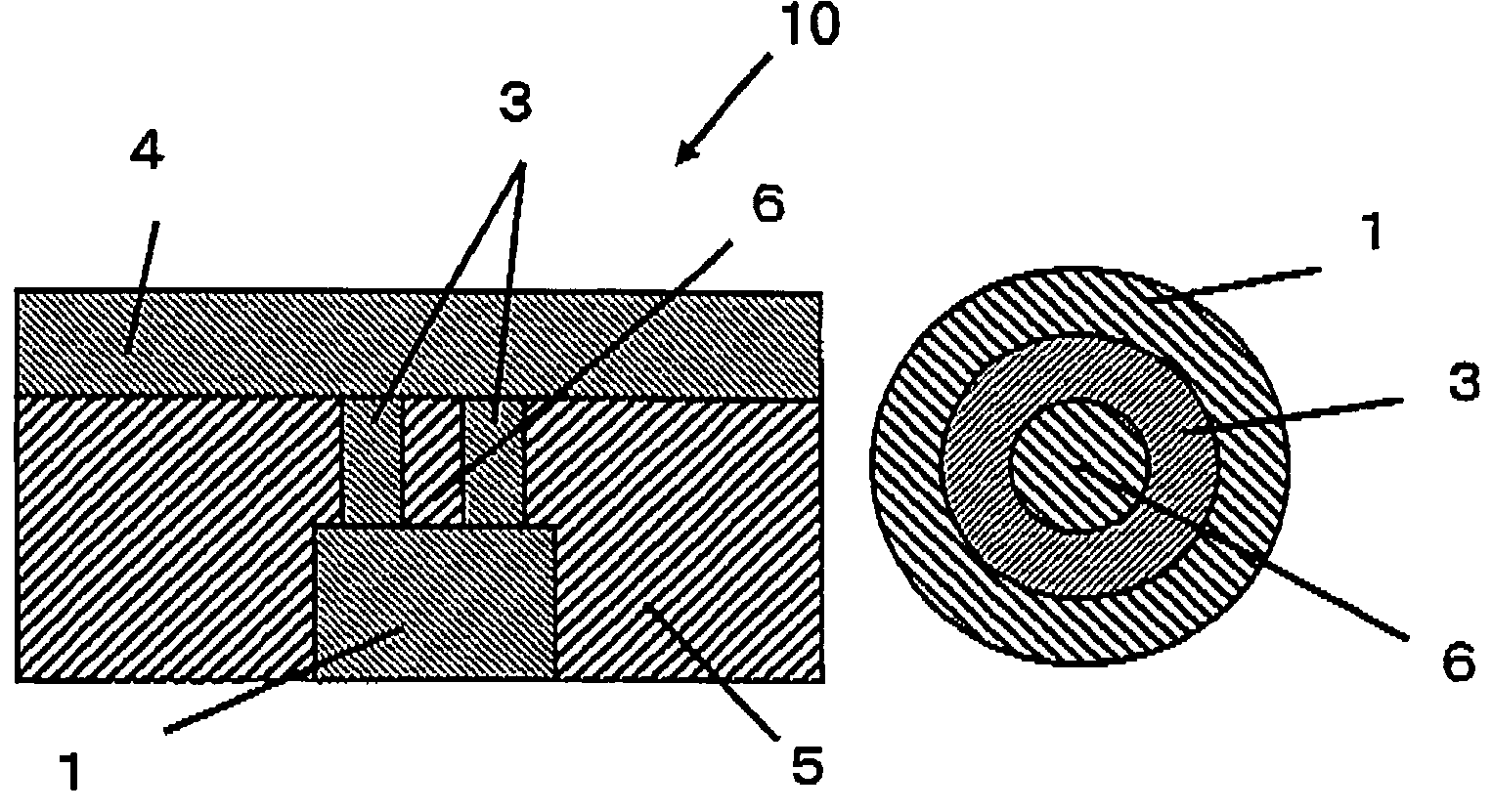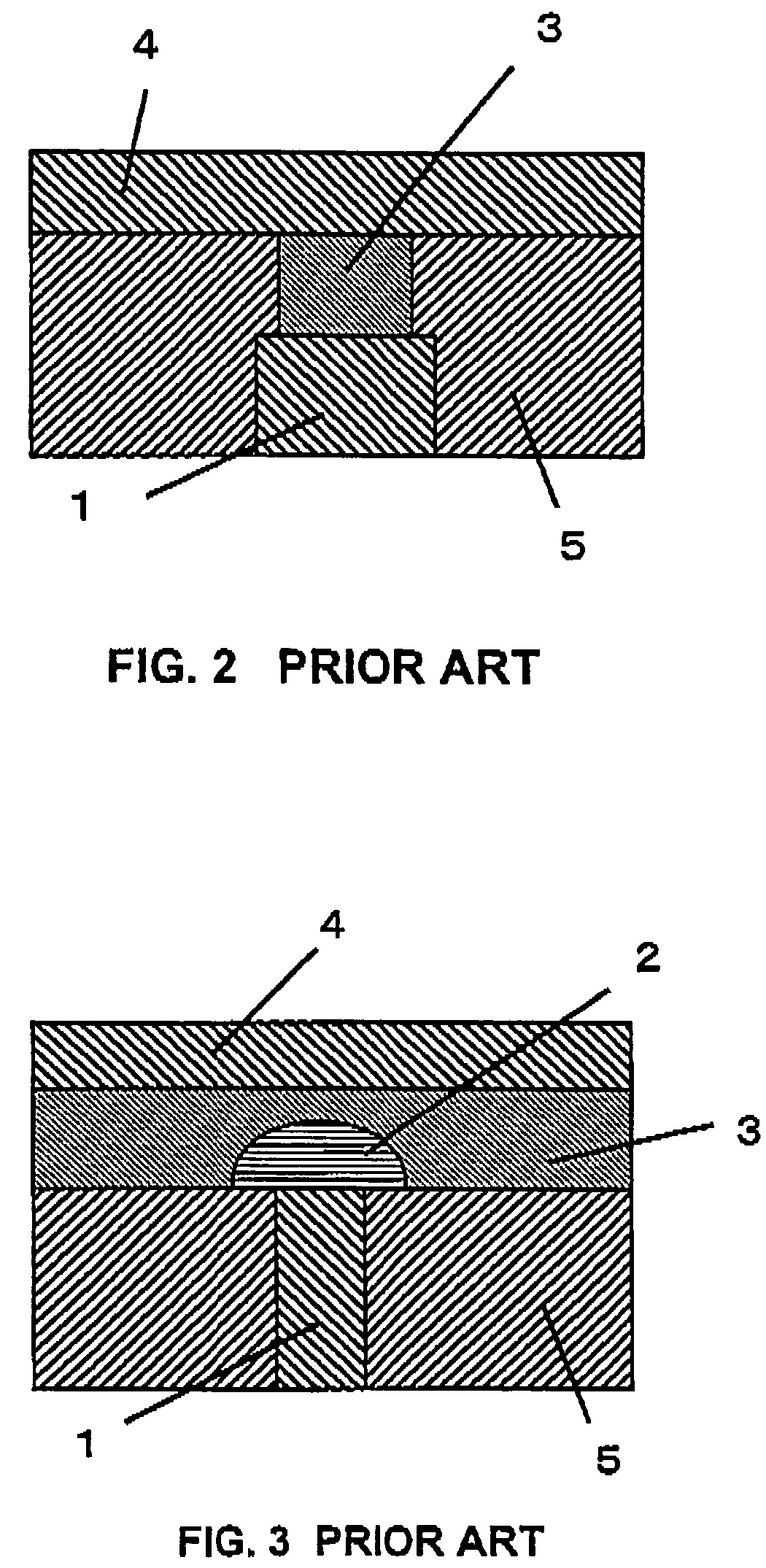Semiconductor device and method of producing the same
a technology of semiconductors and devices, applied in the direction of semiconductor devices, bulk negative resistance effect devices, electrical appliances, etc., can solve the problems of no solution proposed, no rewriting number is guaranteed, and the volume of the phase change region is not increased
- Summary
- Abstract
- Description
- Claims
- Application Information
AI Technical Summary
Benefits of technology
Problems solved by technology
Method used
Image
Examples
first embodiment
[0067]Referring to FIGS. 6 to 13, description will be made of a memory element portion of a memory cell according to a first embodiment of this invention. In the figures, those parts directly related to this invention, including a chalcogenide layer, a heater electrode, and an upper electrode, are illustrated and other parts such as transistors and wiring layers contained in a typical semiconductor device are omitted.
[0068]As illustrated in FIG. 6, a chalcogenide layer 3 according to the first embodiment is formed into a ring shape as a side wall along an inner surface of a contact hole 7 formed on a heater electrode or first electrode 1 as phase changing portion and penetrating an interlayer insulation film 5 of a thermal oxide film (SiO2). A buried insulation film 6 is filled inside the chalcogenide layer 3 of a ring shape. Surfaces of the interlayer insulation film 5, the buried insulation film 6, and the chalcogenide layer 3 are planarized or flattened by CMP (Chemical Mechanica...
second embodiment
[0078]Referring to FIG. 14, a second embodiment of this invention will be described.
[0079]As illustrated in FIG. 14, the second embodiment is different from the first embodiment in that a first insulation film 8 is formed as a side wall inside the contact hole 7 at a position between the interlayer insulation film 5 and the chalcogenide layer 3. Similar parts are designated by like reference numerals and description thereof is omitted.
[0080]A memory cell illustrated in FIG. 14 comprises the first insulation film 8 as the side wall inside the contact hole 7 formed in the interlayer insulation film 5. Inside the first insulation film 8, the chalcogenide layer 3 and the buried insulation film 6 are formed. In the structure of the second embodiment, the chalcogenide layer 3 has upper and lower surfaces contacted with the first electrode or heater electrode 1 as phase changing portion and the upper electrode 4 and a side surface contacted with the first insulation film 8 and the buried i...
third embodiment
[0083]Referring to FIG. 15, a third embodiment of this invention will be described. FIG. 15 is a sectional view of a memory element portion of a memory cell according to the third embodiment. This embodiment is different from the second embodiment in that the chalcogenide layer has a recessed structure and is further reduced in volume. As illustrated in FIG. 15, the chalcogenide layer 3 has a recessed structure lower in height than planarized surfaces of the interlayer insulation film 5, the first insulation film 8, and the buried insulation film 6. The upper electrode 4 is formed on the planarized surfaces and in a recessed portion. The chalcogenide layer 3 has side surfaces contacted with the first insulation film 8 and the buried insulation film 6 like in the second embodiment. Similar parts are designated by like reference numerals and description thereof is omitted.
[0084]Description will be made of a method of producing a semiconductor device according to the third embodiment w...
PUM
 Login to View More
Login to View More Abstract
Description
Claims
Application Information
 Login to View More
Login to View More - R&D
- Intellectual Property
- Life Sciences
- Materials
- Tech Scout
- Unparalleled Data Quality
- Higher Quality Content
- 60% Fewer Hallucinations
Browse by: Latest US Patents, China's latest patents, Technical Efficacy Thesaurus, Application Domain, Technology Topic, Popular Technical Reports.
© 2025 PatSnap. All rights reserved.Legal|Privacy policy|Modern Slavery Act Transparency Statement|Sitemap|About US| Contact US: help@patsnap.com



